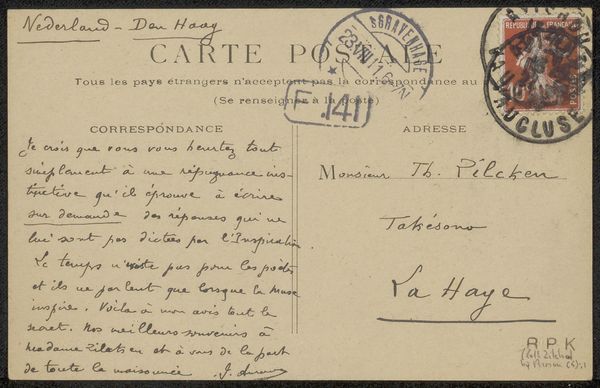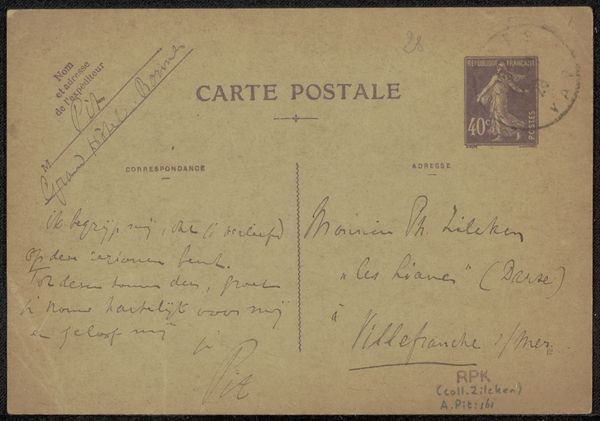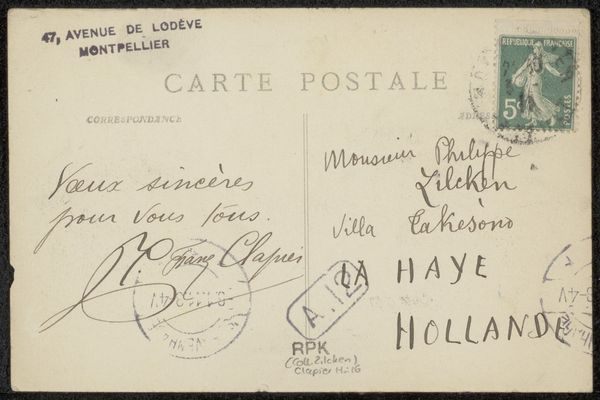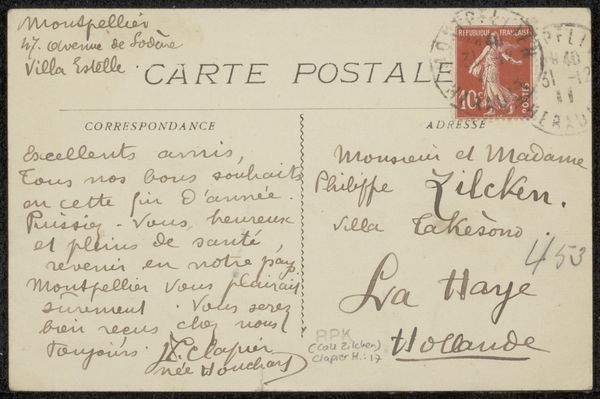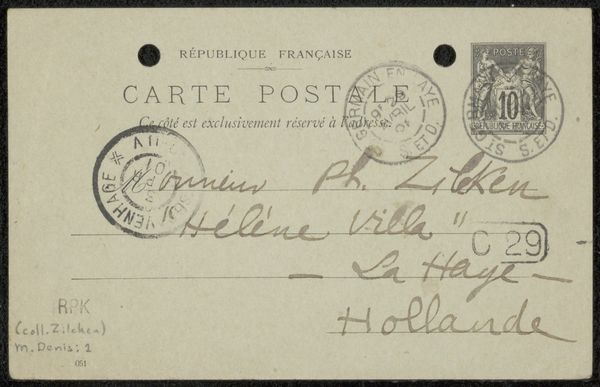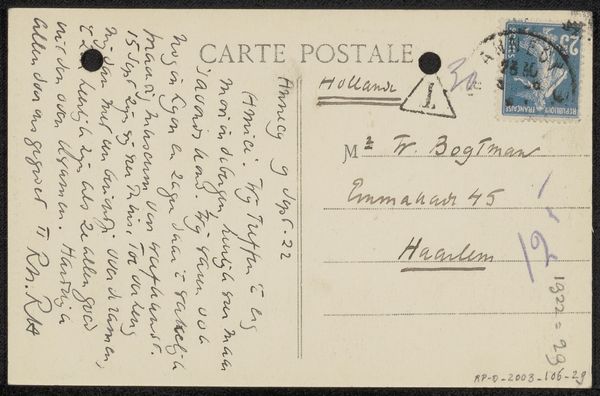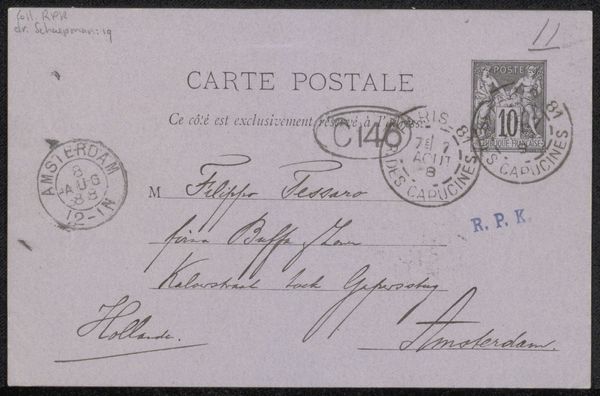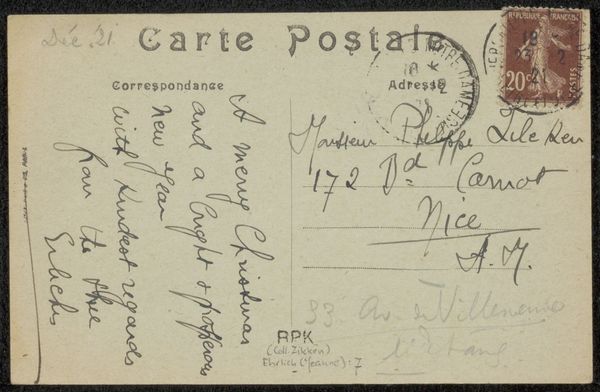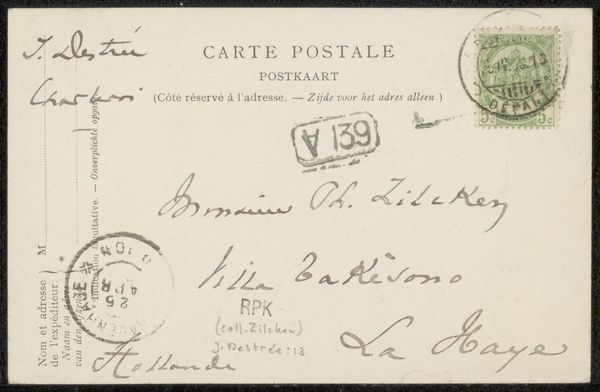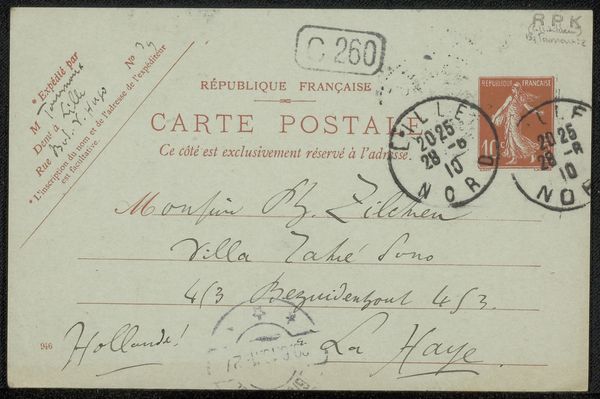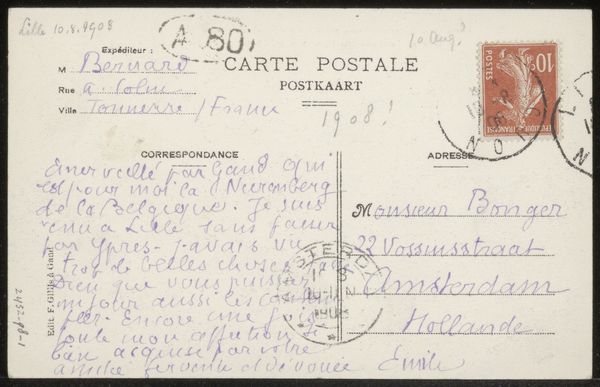
drawing, print, paper, pen
#
drawing
# print
#
hand drawn type
#
paper
#
pen
#
calligraphy
Copyright: Rijks Museum: Open Domain
Editor: This is "Prentbriefkaart aan Philip Zilcken," a postcard to Philip Zilcken by Eugénie Clapier-Houchart. It seems to be a pen and ink drawing or print on paper. I’m struck by the beautiful calligraphy, almost like an artwork in itself, but it is obscured and seems utilitarian at the same time. How do you see it? Curator: It's more than utilitarian, isn't it? Consider the history of correspondence, of letter-writing, especially among women of that era. For whom was this act of communication a vital tool for connection and often the only access they had to power? It's fascinating how this postcard format democratizes that act while still preserving the visual elegance of handwriting, especially when you realize how class, education, and identity influenced penmanship as an art form. Editor: So, you're saying the postcard flattens a power structure inherent in written communication at the time, while maintaining certain characteristics based on those powers? Curator: Exactly. Consider the deliberate choices in handwriting, the stamp. Each element signals identity, class, intention. The handwriting itself can be a powerful performance, subtly revealing the writer’s cultivated self. Editor: I never thought of it that way! So much conveyed in something as simple as a postcard. It challenges our modern perception of a quick, impersonal message. Curator: It truly does. What appears as an unassuming greeting card carries echoes of larger societal currents—gendered communication practices, class distinctions made visible, and shifting power dynamics within visual culture. Editor: I am definitely going to keep an eye out for these social dynamics in artworks going forward. Thanks!
Comments
No comments
Be the first to comment and join the conversation on the ultimate creative platform.

